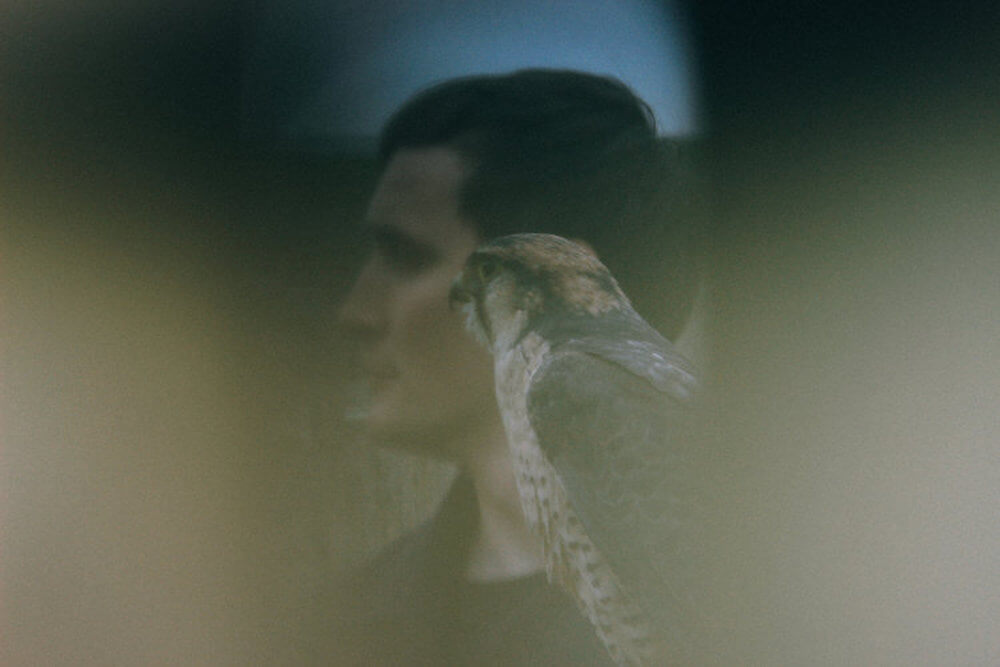From Orkney to the East End: FRONTRUNNER Interviews Erland Cooper

London’s East End was caught in that in-between hour, where the city was caught in the hazy chaos as the last of the commuters were making a sweaty dash to Old Street tube station, while the first of the revellers began slowly filling up the bars. It was hard to imagine at first that the creation of the first two instalments in a triptych of records by Erland Cooper, which so perfectly captures the essence of the Orkney Islands’ (Scotland) wildlife, was created in such a bustling environment. Cooper is a multi-instrumentalist and producer originally from Stromness, Orkney.
Solan Goose dedicates itself through soothing soundscapes to the thriving population of bird life on the island, while Sule Skerry envelopes us in the mystery of the ‘Haar’ (the name given to the mist of the sea in local dialect) and the wonders of the ocean. Turning into a cobbled side street of re-purposed Victorian warehouses and into the peaceful stillness of Cooper’s basement studio, it soon all made sense as the outside city churned silently above our heads. In the ebbing glow of the computer monitor, talk soon turns to London’s ghosts.

“It goes without saying that you’ve just scared the crap out of me with your wee ghost stories,” he puts firmly on record. The favour is soon returned as he describes re-amping his synths through a five thousand year old Neolithic settlement in Skara Brae. “I had this idea that these Neolithic sites are places of worship and burial but also designed to carry the voice. I wondered how a synth would sound inside this space, I didn’t know – it could sound like a toilet or bathroom. The frequencies resonated across the space and it was also a bit freaky, after twenty minutes of this VROOM! VROOM! VROOM! the camera man was like ‘I want to get out of here…”
Having grown up in the close-knit communities on the island, wanderlust set Cooper on a course to Budapest, New York, and now London. However, the creeping sense of homesickness led to him to pocketing Orkneys’ aural delights before being convinced to sharing it with the wider world.
“I never intended to release the first record (Solan Goose). I kept it to myself for six months or so and it wasn’t until my publisher told me “you’ve got to play that to people and get it out into the world” and then six months later it’s flying around, flapping about like a Gannet! My tool is gone, it’s everybody else’s.”

So, where did Cooper even begin in taking on the task of capturing the beauty of the island? “I thought very deeply about what a famous poet called George Mackay Brown said ‘the essence of Orkney’s magic is the deep, marvellous rhythms.’ It’s the rhythm of Orkney, it’s the magic of the everyday that interests me. Once I released Solan Goose, I very quickly had to work on something else and all of a sudden it felt like a map – a nautical map. Orkney can be any word to you, it’s ‘escapism’ for me. I was born there, I was raised there and surrounded by the sea in all its elements. It’s the elements that intrigue me as I thought that I’ll explore the narrative of the sea now, not just the ocean. The myths which surrounds it, the Selkie and the real stories of sailors. Why would anyone make up a story about the Selkie? I keep thinking about it, this person who disappears, this woman who goes off to sea. Perhaps it’s her husband’s way of telling their children ‘she left me’? I love this idea that we create stories and myths to deal with grief, to try and make sense of it all.”

The Orkneys’ abundance of wildlife is an integral part of both the ecosystem and the islanders’ livelihoods. To have the sounds of the North Sea tide ebbing and flowing broadcast across the mainland is a relaxing experience for listeners, but not so much for the radio presenters attempting to get their tongues around the unique Orkney dialect.
“Imagine you’re on the London Underground and you’re surrounded by people, feeling increasingly anxious and sweaty. So I’m asking myself, ‘What’s the name of the puffin in the local dialect? Oh yeah, Tammy Noree’, and then ten minutes has passed. I didn’t imagine for a minute that Mary Ann Hobbs or Mark Riley would be going ‘this is…Ma…Mow…Maalie!?‘ I love it! It creates an intrigue for the listener before they’ve even listened about what Orkney may or may not be.”

What Orkney may or may not be seems to form the very foundations of the records as Sule Skerry features an abundance of guests. “I love collaborating, it’s the lifeblood! A classical violinist can take eight or nine notes and make it so much better than I imagined.” The question remains, what will the coming third album capture? “It’s land, fundamentally. It’s land, people, community, hope and myth”. With three records and that one short sentence, it seems Erland Cooper has pocketed Orkney’s past, present and future.
This interview with Erland Cooper will appear in FRONTRUNNER’s Winter edition, coming out in January 2020.










